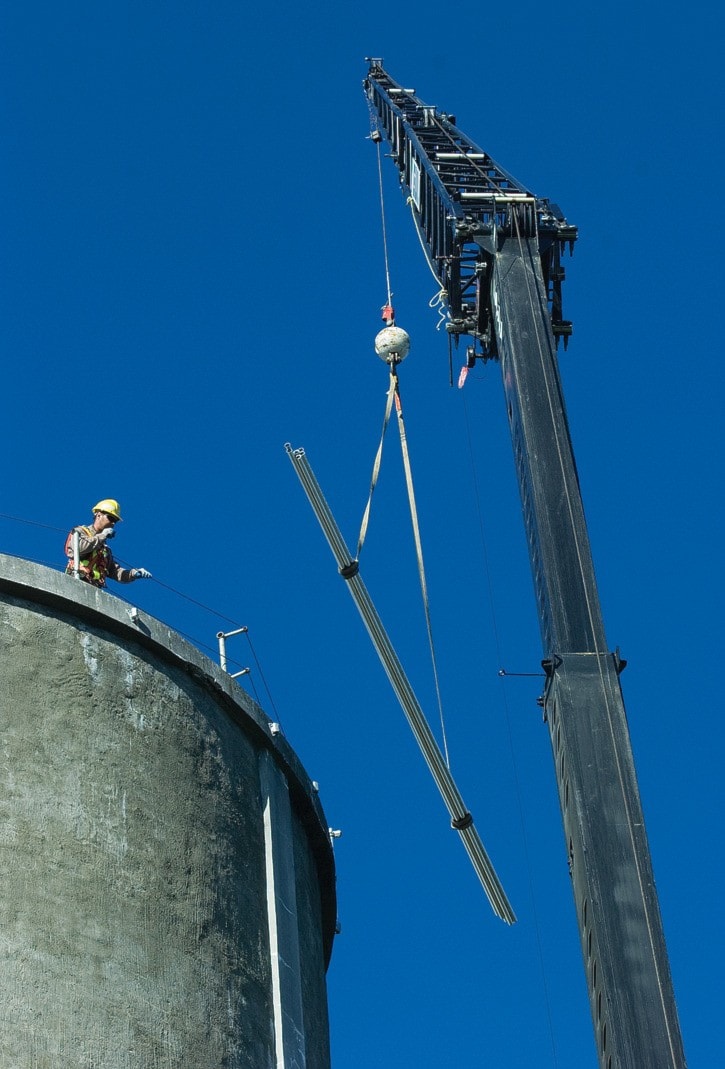Chlorination continues to be in effect in White Rock’s water system, representatives of the privately owned utility, Epcor, confirm.
But the chlorination is, at present, only at Well 6 in the higher of the city’s two water-pressure systems, according to Epcor operations manager Christian Madsen.
Further chlorination of the water is not likely to be implemented until a detailed design plan for the utility’s future operations is drawn up and approved, he said.
A conceptual design report – which, in addition to water disinfection, also looks at such factors as arsenic and magnesium treatment and disposal, seismic upgrades, reservoir storage and the provision of an additional replacement well – is not expected to be complete until early summer, Madsen added.
Once that study is complete, Epcor will determine what direction it wants to take in a comprehensive “multi-barrier approach” – including disinfection – to ensuring a safe supply of water, Madsen said.
A detailed design plan would be subject to approval by two regulatory authorities, he noted.
“Fraser Health will be looking at it from the public-health perspective,” he said. “And the B.C. Comptroller looks at how much it is going to cost, and makes sure that White Rock ratepayers are getting appropriate value for their money.”
Both the conceptual plan and the detailed design plan would be shared with the public before changes are made, Madsen said.
He noted company staffers were surprised that an April 7 public-information meeting to share findings of the recent report on last August’s boil-water advisory drew a total of only 36 people, in all, to Star of the Sea Hall.
The advisory – issued because of E. coli contamination of the water later traced to a small intrusion of bird feces – led to upgrading of Epcor’s aging uptown reservoirs and introduction of chlorination at Well 6.
“I know that water quality and chlorination is a big concern with people in the community, but a lot of information has come out since August, and the feedback we’ve received has not been as high as expected,” he said.
“It suggests the information requirements of some people have been met, or that people opposed to chlorine have found ways to get it out of the water.”
Madsen said he advises three easy ways to remove chlorine from drinking water: letting it stand in a pitcher in which lemon juice has been added; buying one of the commercially available activated charcoal carbon filter systems; or boiling the water.
Madsen acknowledges that another common concern about chlorination is disinfection byproducts, but said testing in White Rock has shown that, even at the highest concentration of chlorine, the level of byproducts is “a quarter of the lowest Health Canada guidelines for disinfection by-products.”
He said chlorination provides the best residual disinfection for the lowest cost to ratepayers, but rejected the suggestion of some critics that Epcor is taking a cheap route to avoid inspection, maintenance and housekeeping costs.
“I don’t think that’s the case,” he said, noting that monitoring chlorination actually increases the amount of water testing done on the system.
UV disinfection is effective for animal-originating pathogens he said, but its protection is location-specific and could not prevent compromise of a wider system. Chlorination is still the usual backup of choice, he said,
“There is not one large-scale municipal UV water system that is going to UV and taking out chlorination,” he said.
But White Rock can still pride itself on its underground spring water, he said – it doesn’t have the pathogens that exist in surface water system systems,.
“That’s what UV is specifically used for – but White Rock doesn’t have to do the extra treatment that other places do.”
